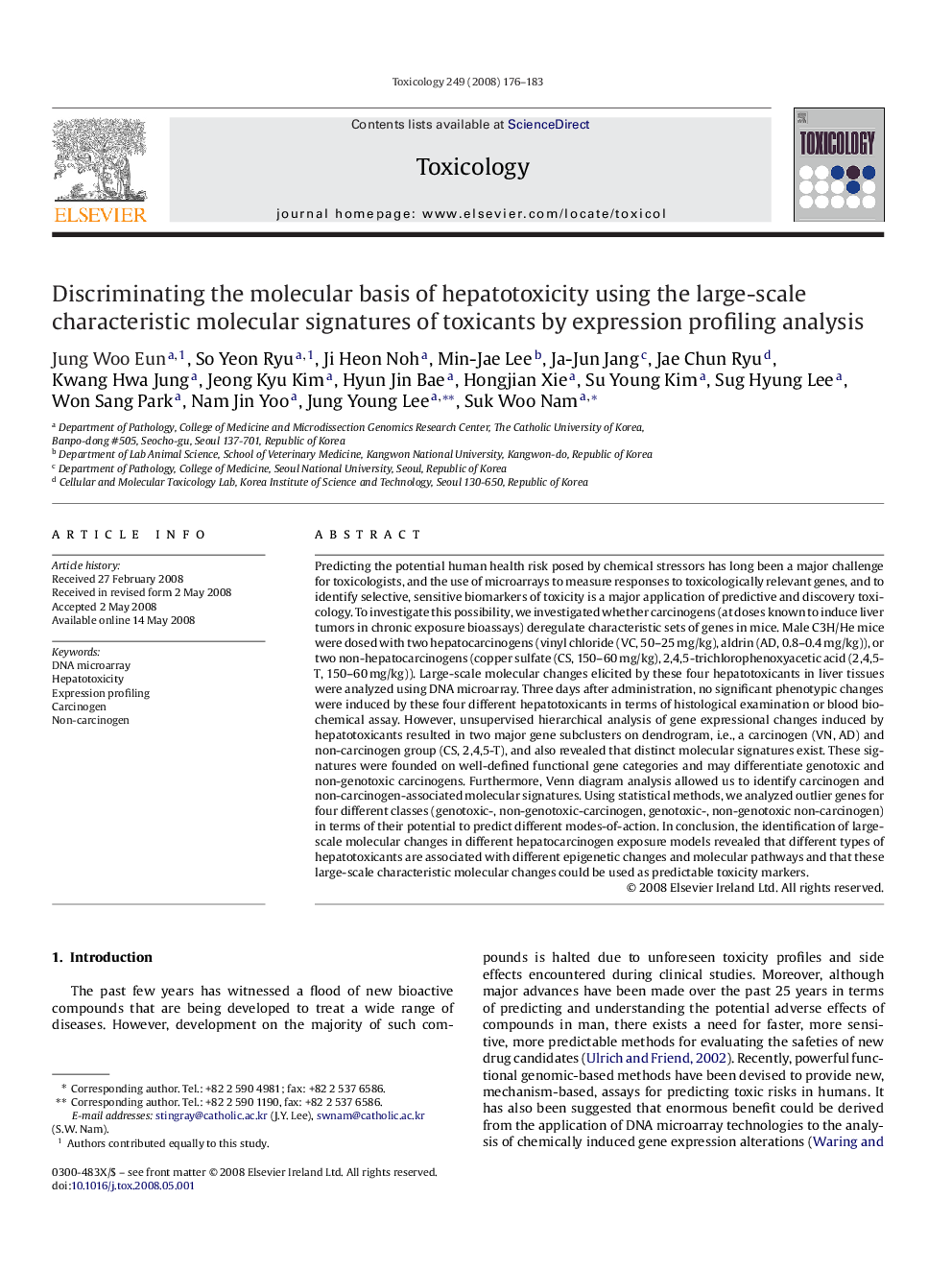| کد مقاله | کد نشریه | سال انتشار | مقاله انگلیسی | نسخه تمام متن |
|---|---|---|---|---|
| 2596970 | 1562406 | 2008 | 8 صفحه PDF | دانلود رایگان |

Predicting the potential human health risk posed by chemical stressors has long been a major challenge for toxicologists, and the use of microarrays to measure responses to toxicologically relevant genes, and to identify selective, sensitive biomarkers of toxicity is a major application of predictive and discovery toxicology. To investigate this possibility, we investigated whether carcinogens (at doses known to induce liver tumors in chronic exposure bioassays) deregulate characteristic sets of genes in mice. Male C3H/He mice were dosed with two hepatocarcinogens (vinyl chloride (VC, 50–25 mg/kg), aldrin (AD, 0.8–0.4 mg/kg)), or two non-hepatocarcinogens (copper sulfate (CS, 150–60 mg/kg), 2,4,5-trichlorophenoxyacetic acid (2,4,5-T, 150–60 mg/kg)). Large-scale molecular changes elicited by these four hepatotoxicants in liver tissues were analyzed using DNA microarray. Three days after administration, no significant phenotypic changes were induced by these four different hepatotoxicants in terms of histological examination or blood biochemical assay. However, unsupervised hierarchical analysis of gene expressional changes induced by hepatotoxicants resulted in two major gene subclusters on dendrogram, i.e., a carcinogen (VN, AD) and non-carcinogen group (CS, 2,4,5-T), and also revealed that distinct molecular signatures exist. These signatures were founded on well-defined functional gene categories and may differentiate genotoxic and non-genotoxic carcinogens. Furthermore, Venn diagram analysis allowed us to identify carcinogen and non-carcinogen-associated molecular signatures. Using statistical methods, we analyzed outlier genes for four different classes (genotoxic-, non-genotoxic-carcinogen, genotoxic-, non-genotoxic non-carcinogen) in terms of their potential to predict different modes-of-action. In conclusion, the identification of large-scale molecular changes in different hepatocarcinogen exposure models revealed that different types of hepatotoxicants are associated with different epigenetic changes and molecular pathways and that these large-scale characteristic molecular changes could be used as predictable toxicity markers.
Journal: Toxicology - Volume 249, Issues 2–3, 30 July 2008, Pages 176–183